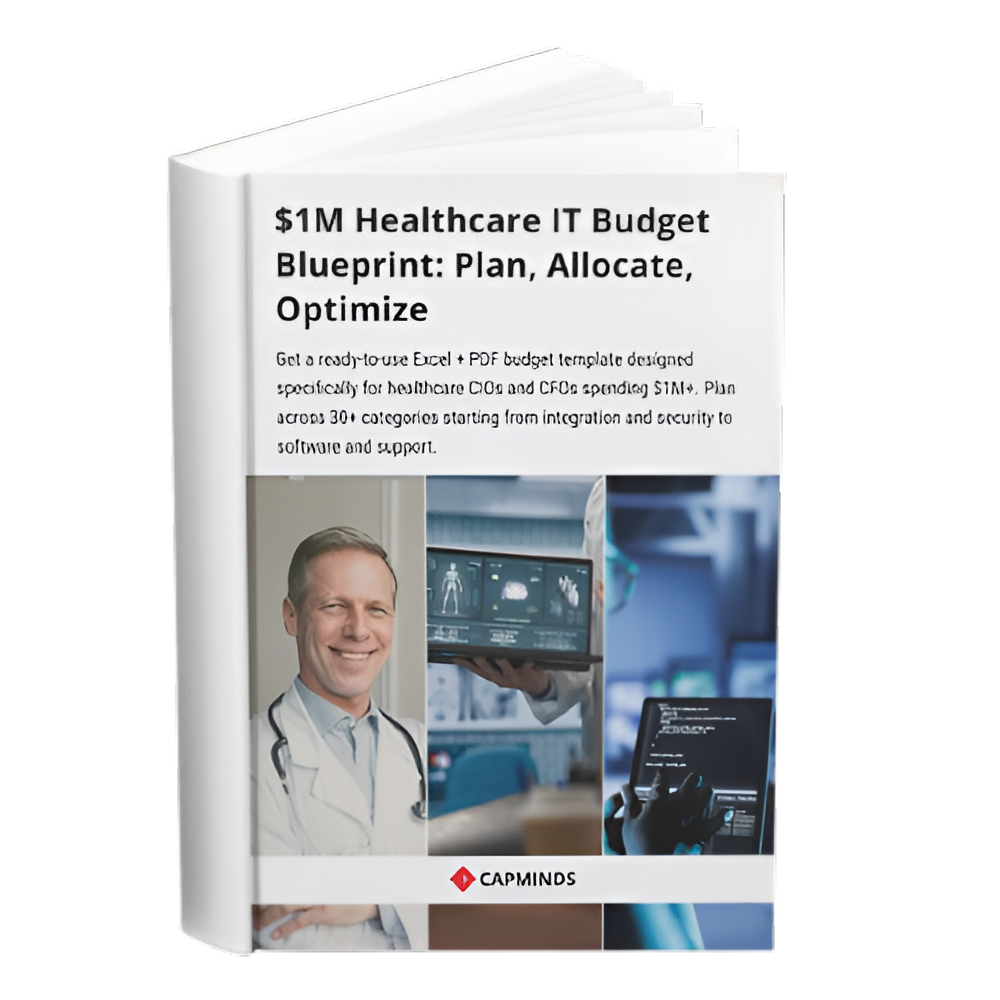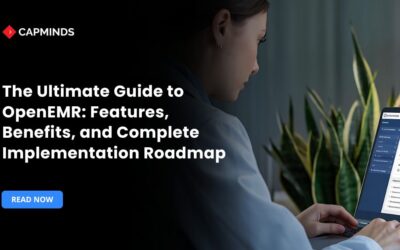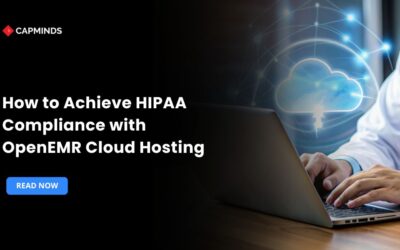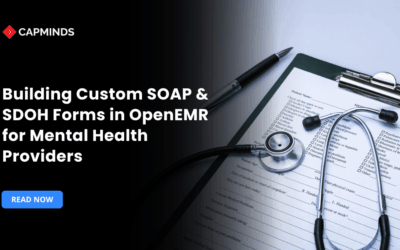How Integrations Made Easy With OpenEMR [Undiscovered Features + Benefits]
Managing patient records might be complicated, but OpenEMR integrations make it easier. It connects to labs, pharmacies, and billing systems, allowing data to flow effortlessly without requiring manual entry.
OpenEMR supports modern standards such as FHIR and APIs, which allow you to customize connections with other software. Some hidden capabilities include LDAP authentication integration, real-time insurance verification, and device connectivity for low-cost medical equipment.
These capabilities save time, eliminate errors, and improve patient care by providing correct, up-to-date information at your fingertips. OpenEMR integration simplifies daily tasks for solo practices and large clinics, requiring no technical expertise.
OpenEMR
OpenEMR is generally a medical practice management software that supports Electronic Medical Records (EMR) too. It is certified with ONC Complete Ambulatory EHR, and it proudly holds a thoroughly integrated EMR, medical practice management, scheduling, electronic billing, and more.
OpenEMR has easy adaptability. It can run on Windows, Linux, Mac OS X, and many other platforms. The types of features are supported by the core OpenEMR, which ultimately enables the smooth workflow of practices.
Undiscovered OpenEMR Integration Features You Might’ve Missed
1. Custom API Support
In addition to the built-in Standard and FHIR APIs, OpenEMR’s custom API support allows developers to construct and expose their RESTful endpoints, facilitating smooth connection with external apps via OAuth2 security and JSON-based calls.
This feature leverages OpenEMR’s modular architecture, allowing new functionalities via modules without modifying the core system code. Community threads on building new API routes in OpenEMR versions 6 and 7 show how developers can provide custom routes and scopes to design distinct data processing.
Testing and exploring your APIs is made simple with Swagger integration, which offers interactive API documentation for both standard and custom endpoints.
- You can match the API exactly to your business processes, such as sending appointment reminders or custom reports.
- By defining custom scopes, you control precisely which parts of the system the API can access.
- Custom APIs are added via modules, so you can upgrade OpenEMR without losing your custom code.
2. Modular Architecture
OpenEMR’s modular architecture allows you to add and remove “modules,” or discrete pieces of functionality, without affecting the main system code, ensuring that your primary installation is secure and upgradeable.
Developers can quickly add new features such as lab interfaces, fax/SMS messaging, and patient check-in kiosks since each module is kept in its folder, follows a standard directory structure, and communicates with OpenEMR’s menus and event system via simple configuration files.
- By keeping custom code in modules, you avoid conflicts when upgrading OpenEMR: core updates don’t overwrite your modules.
- Developers can share or sell modules separately, such as a Quest lab connector or a payroll calculator, so practices can mix and match only the features they need.
- A built‑in event dispatcher lets modules listen for or emit events, enabling them to interact with OpenEMR’s workflow without changing core files.
Here is how Modular Architecture works within OpenEMR:
- Place your module folder under interface/modules/custom_modules, then go to Admin → Modules to register and enable it.
- In config/module.config.php, declare menu entries, URL routes, and hook callbacks to weave your module’s pages into OpenEMR’s interface.
- Use the event dispatcher for publish/subscribe hooks, and request services via the service container for dependency injection, this keeps modules decoupled and maintainable.
- Modules can include unit tests in their test/ directory, and Swagger UI can auto‑generate docs for any REST endpoints you expose.
3. Integrated OAuth2 Authentication
Because OpenEMR has integrated OAuth2 authentication, it functions as an OAuth2/OpenID Connect provider, providing time-limited access tokens that allow external apps to access its REST and FHIR APIs without disclosing user credentials.
OpenEMR manages client registration, token issuance, scopes, and revocation by integrating this standard protocol, which makes integrations safer and simpler to maintain.
- Tokens can be set to expire, revoked, and scoped narrowly, reducing the risk if they’re compromised.
- OAuth2 is supported by countless tools (Postman, FHIR clients, libraries), so you don’t have to write custom authentication code.
- Using OAuth2/OIDC over HTTPS helps meet healthcare security standards like HIPAA by ensuring strong, auditable access controls.
4. Patient-Facing APIs
To enable patients or third-party portals to receive and submit health data without logging into the main application, OpenEMR’s patient-facing APIs, also known as the Patient Portal REST API, allow practices to offer a collection of secure web endpoints under /apis/{site}/portal.
Although they focus on patient-specific scopes and routes, such as demographics, encounters, and documents, they operate concurrently with the standard and FHIR APIs.
Similar to the FHIR and standard APIs, this capability is marked as experimental as of OpenEMR 6.0.0 and needs to be enabled in Administration → Globals → Connectors. Authentication is handled via OAuth2 bearer tokens, and all endpoints are documented and testable by Swagger.
Practices can integrate mobile apps, patient portals, or custom front-ends that simplify tasks like scheduling appointments or reviewing test results without granting full system access by exposing patient-specific endpoints.
By guaranteeing that patients have direct, instant access to their information, this lowers the administrative burden and enhances patient involvement.
Real-World Integrations of OpenEMR That Boost Practice Performance
1. Lab and Imaging Integrations
OpenEMR can interface directly with laboratory information systems so that you can send lab orders and receive results electronically, no more paper reports or manual data entry. These interfaces can use one of several industry‑standard methods:
- Real‑time messaging protocols that transmit orders/results between OpenEMR and labs like Quest, LabCorp, BioReference, etc.
- A secure API‑based service where OpenEMR polls for new results; set up under Administration → Globals → Connectors by checking “Enable Lab Exchange” and entering your site ID/token.
- Modern FHIR‑based connectors that map lab data to OpenEMR using the SMART framework, ideal for practices moving toward FHIR interoperability.
Once configured, you’ll see new orders and results in OpenEMR’s Procedures → Pending Review and Patient Results screens.
OpenEMR includes a built‑in, web‑based DICOM image viewer so clinicians can pull up X‑rays, CTs, MRIs, and more right inside the patient’s chart. It offers all the basics you expect from a PACS viewer, windowing, panning, zooming, and simple filters, without ever leaving OpenEMR’s interface.
- Images are either stored in OpenEMR’s file system or linked via a standard DICOM store.
- Clicking “View Image” launches the DWV‑based viewer in your browser.
- Adjust brightness/contrast, zoom in on areas of interest, and compare series, all within the same workflow.
2. Billing Integrations
Billing integrations in OpenEMR connect your medical practice’s electronic health record system directly to payment and insurance claim processors.
By setting up these connections, practices can automatically generate invoices, submit claims electronically, and accept patient payments without leaving the OpenEMR interface. This automation reduces manual data entry, speeds up reimbursements, and minimizes billing errors, ultimately boosting overall practice performance.
- You enter credentials (API keys or login details) from your chosen payment processor (e.g., Sphere or Stripe) into OpenEMR’s administration settings.
- From a completed patient encounter, OpenEMR can automatically produce the necessary billing documents, such as a CMS‑1500 form for paper claims or an X12 file for electronic submissions.
- The system sends claims directly to insurance clearinghouses via secure EDI (Electronic Data Interchange), eliminating the need to print, mail, or manually upload files.
- Once a claim is approved or a patient makes a payment, the integration records the transaction in OpenEMR’s ledger, updating the patient’s account automatically.
OpenEMR’s flexibility enables it to integrate with various billing tools. Some of the common billing integration tools include:
- Sphere Payment Processing Module – A built‑in option for credit card transactions, Sphere lets practices accept online, mail‑order, and phone‑keyed payments with built‑in encryption and flat‑rate pricing.
- Stripe Integration – A popular choice for online payments, Stripe’s API keys can be entered into OpenEMR to accept secure card payments directly through the patient portal or billing screens.
- ClaimRev Clearinghouse Module – Although third‑party, ClaimRev offers a simple REST API to send claims and automatically download reports back into OpenEMR for smooth claims reconciliation.
Related: OpenEMR & Sphere: The Ultimate Guide
3. Telehealth Platforms
By integrating OpenEMR’s telehealth platform, medical professionals may conduct secure video consultations within their electronic health record system, doing away with the need to navigate between different apps. By installing specialized modules, like the Comlink Telehealth Module, or connecting to open-source solutions, like Jitsi, through APIs and standards like HL7 FHIR, practices can plan virtual visits, initiate video calls from patient charts, and record session details automatically without requiring manual data entry.
IT workers can easily set up the telehealth module by enabling it in OpenEMR’s administration settings, inputting API credentials, and allocating user permissions.
In the end, this smooth approach increases practice efficiency and patient happiness by improving patient access, particularly for those in rural areas, expediting clinical documentation, and lowering administrative costs.
- In the OpenEMR Admin panel, navigate to Modules, locate the telehealth or “Comlink Telehealth” module, and click Register and Install. This makes telehealth features available in the scheduler and patient encounter screens.
- Under Globals → Misc → Telehealth, administrators input API keys, secret tokens, and endpoint URLs for the chosen platform to establish a secure connection.
- Assign roles and access levels in Users → Privileges so only authorized clinicians and staff can start, join, and manage telehealth sessions. This step ensures compliance with privacy regulations and workflow control.
- When creating an appointment, select Telehealth as the visit type. Providers and patients receive unique session links. At appointment time, clinicians launch the video call from the patient’s chart, and OpenEMR automatically records start/end timestamps in the encounter note.
Related: 6 Simple Steps to Integrate the Comlink Telehealth Module with OpenEMR
4. Pharmacy & E-Prescriptions
OpenEMR’s Pharmacy & e-Prescriptions Integration replaces paper scripts and faxes with safe digital processes by enabling practices to electronically transfer prescription orders from the patient’s medical record directly to the pharmacy of their choice. Through subscription modules, it may be expanded to networks like:
- Surescripts
- DrFirst
- MDToolbox
- DoseSpot.
It also supports third-party services like Therapy Brands and Weno Exchange out of the box.
Prescription creation, electronic submission, refill requests, and controlled drug compliance are streamlined through configuration, which entails entering API credentials, installing the e-Prescribe module, and adding pharmacy details in Practice Settings.
This interface decreases pharmaceutical errors, expedites patient access to medications, and relieves staff of manual data input by automating checks for allergies, interactions, and formularies and by directly recording transaction history in the chart.
5. CRM/Patient Portals
By linking external customer relationship management systems and secure web portals directly to the EHR, OpenEMR’s CRM and Patient Portal connectors allow practices to optimize patient communications and self-service processes. CRM integration automates follow-up reminders and marketing outreach within the clinical workflow by syncing patient information, appointments, and messages between OpenEMR and systems such as SuiteCRM or SugarCRM.
Through a CMS-based solution or the native OpenEMR portal, patient portal integration offers a safe, self-service interface where patients may register, access their records, schedule appointments, message doctors, and handle paying online.
By enhancing patient involvement, cutting down on administrative work, and guaranteeing data consistency across platforms, these linkages collectively improve practice effectiveness.
Benefits of Using OpenEMR Integrations
1. Improves the quality of care
Patients can get maximum personalized care with OpenEMR’s detailed patient demographics and clinical decision rule engine. With the availability of useful information, physicians can make appropriate, quick decisions and actions all the time.
2. Lower costs
OpenEMR saves money for clinics. It is an open source, so it is free to install, leaving clinics with no additional operational expenses. Its features, like automatic lab requests, improve efficiency, and all financials will be properly taken care of with insurance and billing.
3. Open source
OpenEMR is an open-source system that can be downloaded and altered free of cost. Modules that are extended are available in the market for purchase or for free. The users can customize the system to fit their clinical needs.
4. Systematized billing
OpenEMR has in-depth billing capabilities and integration facilities. This makes payments and coordinating insurance very easy. The feature uses an insurance tracking interface and can support insurance eligibility queries.
5. Better secured communication
Better and advanced communication facility upgrades the entire process of clinics and patients. The communication between physicians and patients should be robust, or else there won’t be understanding and improvement in treatments.
Sharing relevant information among each other increases treatment outcomes. The direct messaging platform equalizes communication within appointment scheduling and file sharing.
Related: 5 Core Benefits Of OpenEMR Software Likely Don’t Know
CapMinds OpenEMR Customization and Integration Service
CapMinds OpenEMR equips clinicians with the best features and ways to integrate. It makes their workflows more efficient and filtered.
The integrated features will allow them to combine the ability of patient record management with conceptual and concurrent reminders.
This enhances the process of decision-making and improves patient care and quality.
- At CapMinds, OpenEMR custom solutions are developed with much care and accuracy to match the special practice needs.
- It will be low-cost and the perfect budget solution for your practice’s long-term future.
- CapMinds OpenEMR prioritizes secure data management & ensures compliance with industry regulations, offering healthcare providers peace of mind.
Get the best technologies and HIPAA-compliant and efficient OpenEMR from CapMinds that can be tailored to fit your practice.
Our OpenEMR services facilitate a Modern User Interface (UI), customization, production support, and training. They also facilitate billing, reporting, specialty enhancements, clearing house integrations, e-prescribing, and cloud services.
“Get the most experienced, proven, and perfect professional support for your OpenEMR.”
![How Integrations Made Easy With OpenEMR [Undiscovered Features + Benefits]](https://www.capminds.com/wp-content/uploads/2022/08/Blog-Featured-Images-2025-04-23T103209.883-1024x536.jpg)



